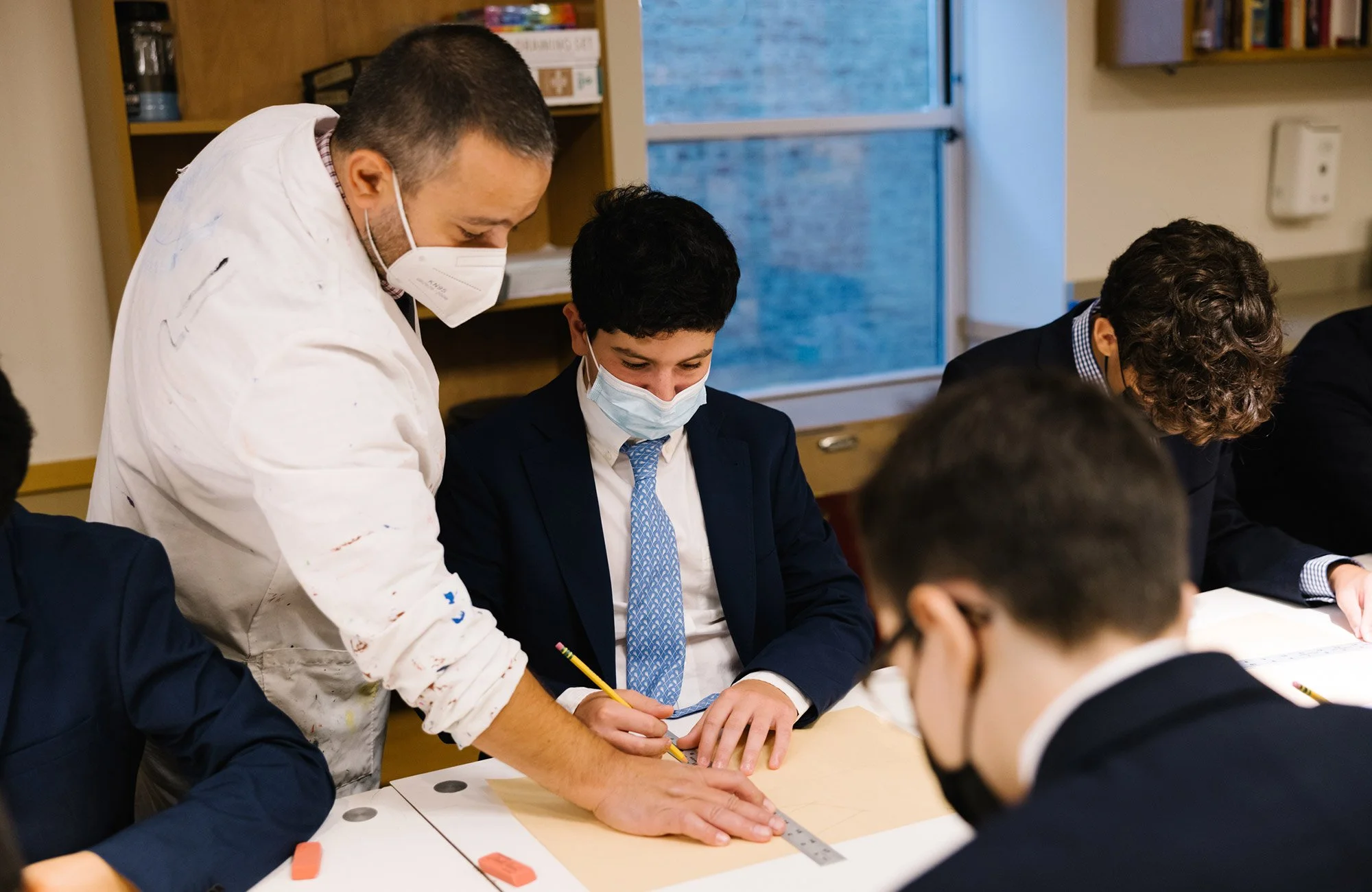Making the Implicit Explicit
How competency-based learning yields a deeper learning.
November 2021
Being introduced to Browning students this year, competency-based learning (CBL), is a way of defining learning goals and offering feedback to students. Competency-based learning makes explicit the learning goals of a course and articulates what a student is expected to learn. This then provides a method for offering specific feedback about where a student is in his path to competency. We sat down with Danielle Passno, Assistant Head of School and Director of Teaching and Learning, to discuss this exciting development for our boys.
We implement new pedagogical tools at Browning for one reason only—to cause deeper learning in our students. CBL has been on the table for Browning for a long time because it’s good pedagogy that works really well for building agency in boys. We decided to really explore what it could look like at Browning when our entire faculty read Competency-Based Education by Rose Colby in the spring of 2020.
Any pedagogical shift made by an entire faculty should be made over a three- to five-year time period (at least!). It’s incredibly hard and important to make such cultural changes slowly and deliberately so that the cart doesn’t start leading the horse. A few questions we’ve asked ourselves through this whole process have been:
What incremental steps can we take?
How can we use small, quick failures to inform long-term, productive change?
What are we doing that feels like jumping through hoops rather than truly informing learning?
Some of our initial steps included having teachers who were really excited about this change taking the first steps. As one example, we had teachers try out new rubrics based on rough drafts of competencies one unit at a time. Their feedback would then change what we tried for the next unit.
The questions we ask show what we care about. If I only ask about grades, it indicates that outward markers of performance are all that I care about. Rather, we should be using questions that ignite a child’s own curiosity and metacognition (i.e., thinking about his own learning). Some of my favorite questions include:
Which assignment did you enjoy the most this week? What’s the best academic challenge you’ve been given so far this year?
What’s the most useful piece of feedback your teacher gave you on your paper? What are you going to do with it?
Now that you’ve turned in your assignment, what would you change about how you completed it if you could do it all over again?
Where do you feel most successful in your learning? In which class do you feel the most proud of your work?
Where are you getting stuck?
We’re introducing competency-based rubrics to the students. I think the boys will feel empowered when they realize how much they have learned and how much they can talk about their growth and areas of development.
It requires more time to give good, actionable feedback. How can teachers make actionable feedback efficient to give? That’s going to take time and practice. I’m in awe of how far our faculty have already traveled on this road, and we’re learning from each other how to be better and faster at this type of good work. And to answer that last question, any time you see a student learn something hard, it’s incredibly rewarding. CBL will help make that learning more visible.
It looks like boys are able to talk with authority and clarity about their own work and learning habits. We’ll know we’ve been successful if in three years our student-led conferences have boys referring to competency-based outcomes and rubrics to support what they’re saying about their learning. Their level of specificity will signal our success.
CBL prepares boys for the autonomy of college learning. With such metacognitive skills intact, the boys will be able to make the absolute most of the opportunities available to them. It will teach them how to talk about their own work, recognize how to optimize learning, become comfortable talking about their interests and growth areas with professors, and make choices based on their passions and purpose. Perhaps most importantly, it will help them know how to take feedback and put it into action—a critical skill for immediate growth in any profession one pursues.




